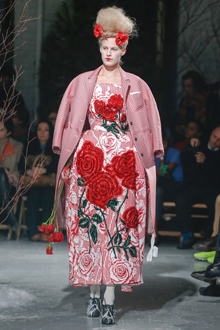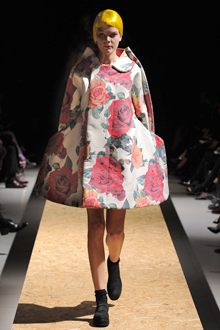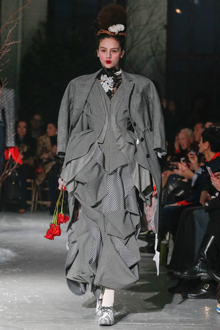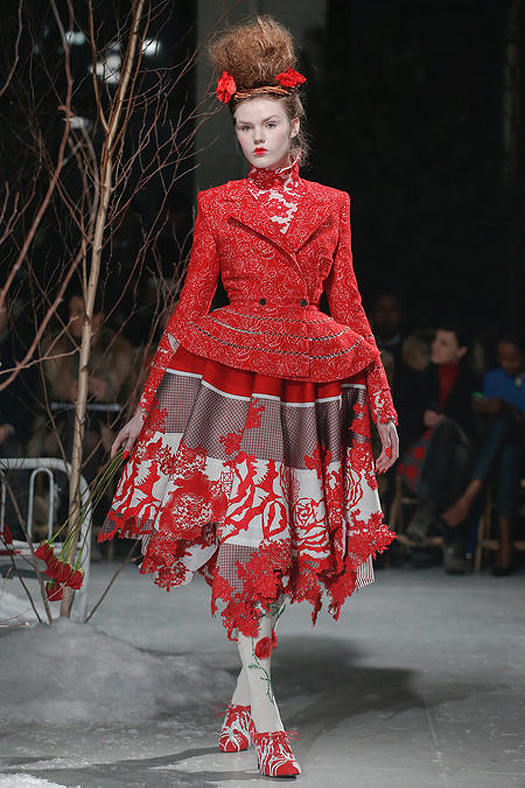American philosopher and one of the leading voices in defining art criticism, Noël Caroll divides the task of a critic, in his book On Criticism,[ref]Caroll, Noël (2009) On Criticism, New York: Routledge[/ref] into two parts. On the one hand critics describe, classify, contextualize, elucidate, interpret and analyse artworks and objects.[ref]Caroll, Noël (2009) On Criticism, New York: Routledge, p.14-15[/ref] All of this suggests that a critic should have an ability to capture the object of criticism and to position it against something bigger: frameworks, contexts, narratives or histories. In order to do this, critics must have a detailed understanding of the past and the present, awareness of culture, subject specific knowledge and an ability to read into objects, all of which can, at least to a certain extent, be measured and agreed on.
The second part of a critic’s task, according to Caroll’s definition, is more problematic as he includes reasoned evaluation as part of the job role.[ref]Caroll, Noël (2009) On Criticism, New York: Routledge, p.14-15[/ref] To evaluate something is to make a judgment, to place a value on the object, whether numerical, aesthetic or cultural. But when it comes to arts and applied arts, the aesthetic value is more difficult to define, impossible even. And at the very core of this problem is subjectivity of taste. The old saying goes that one man’s trash is another man’s treasure, so how does one approach evaluation from a critical angle? And what constitutes being reasoned?
Examples of the collision between tastes and opinions have recently fueled the discussions around fashion and criticism. The New York Times fashion critic Cathy Horyn was not invited to Hedi Slimane’s début show for the house of Yves Saint Laurent (Paris). According to Horyn, this was because of a review she wrote about one of Slimane’s menswear collections in 2004 whilst he was designing for Dior Homme. Slimane felt the review was too personal.[ref]Future, Take Note:Raf Simons Was Here by Cathy Horyn, Published: July 6, 2004[/ref] Despite not being invited to the show, Horyn still went ahead and reviewed the recent show based on images seen online whilst raising the issue of not being invited.[ref] Saint Laurent: Back at the Chateau Marmont by Cathy Horyn, Published: October 2, 2012[/ref] As a response to Horyn’s article, Slimane took to his Twitter account and called Horyn ‘schoolyard bully and also a little bit of a standup comedian’. Whilst the subject of critique (and by critique I mean positive, negative and neutral, contrary to the prevailing reading of the word criticism as being negative) has the freedom to respond and dialogue is always welcome, where does one draw the line between ‘personal’ and ‘professional’ when it comes to subjectivity of taste, and to what extent should this be communicated?
When writing about fashion, I’m often faced with problems of taste. It is easy to write an article with a positive tone when you respond to a designer’s aesthetics (my previous article about Raf Simons’ Dior), and difficult to question designers whose aesthetics you believe in but which have elements that are not translating into relatable designs (my Craig Green article). But how does one write about a designer whose aesthetics one dislikes without making it personal, unprofessional or ill considered?
*
American fashion designer Thom Browne is known for his distinctive take on menswear, particularly his shrunken tailored silhouette which he has steadily worked on since 2001, consisting of slim cut jackets and trousers cropped above the ankle. Like a dandy, his menswear stays true to the established codes of menswear but he over exaggerates them to make it into a spectacle. And to accompany his menswear vision, since 2007 he has worked to establish his womenswear line following similar design approaches to his menswear. Commercial, Browne is not, at least when it comes to the shows. Against other American fashion designers, Browne’s show vision might even come across as avant-garde as he frequently challenges proportions, wearability and aesthetics. He mainly draws from historic reference points such as the Bauhaus theatre and Victorian silhouette which, as an approach, seems more European rather than American. In a recent interview Browne noted: ‘I don’t design from a commercial point of view, but I would love for people to wear my clothes’.[ref]Thom Browne Might be More ‘Suit’ Than You’d Think by Samantha Critchell, Published: March 14, 2013[/ref] He has a vision of what fashion, beauty and contemporary clothing should be.
Browne can cut, sew and create garments, take look 21 from his a/w womenswear 2013 collection for example. The jacket is closely tailored and near perfect in fit, demonstrating the tailoring expertise for which he is known. The skirt combines tiers of different fabrics with an overlay of lace applique and embroidery, all assembled with mastery. The outfit draws references from the Edwardian silhouette, use of fabrics and detailing, and perhaps there is a touch of 40’s and 50’s as well. The styling amplifies historical references: Marie Antoinette make up, 60’s beehive with a thorny crown with its biblical references, roses here and there for the symbolism. The show set completes the effect with winter scenery, male models chained in hospital beds with female models gently stroking their faces with roses as they walk past to the sound of a melancholic symphony. ‘There’s a reason for everything I do. I don’t do these fantastic shows arbitrarily’ he noted in a recent interview.[ref]Thom Browne Might be More ‘Suit’ Than You’d Think by Samantha Critchell, Published: March 14, 2013[/ref] All the ingredients of good design and show are there. Why is it then, that I just don’t respond to Thom Browne’s design vision?
It comes down to the sum of elements that I can endlessly debate. Commerciality, for one, is a reoccurring area of interest for me. Against the body of work done by other American designers such as Alexander Wang and Proenza Schouler who are so commercially minded, so wearable and so contemporary whilst retailing all elements of good design like material innovation and challenging construction, Browne’s show vision comes across as passé. A comparison could be quickly drawn between John Galliano’s and Raf Simons’ work at Dior. Galliano was exciting ten years ago with his extravagant approach to design with its wealth of historic references, but it now seems ever so dated against Simons’ modern and wearable vision. I think we are over over-referencing.
But then again, the historic element is not necessarily what makes Browne’s design work problematic as there are plenty of other designers who have similar reference points but whose work I appreciate. McQueen is perhaps closest in the approach where the show is mostly dedicated for a theatrical spectacle and showmanship of craft rather than off-the-peg clothing. The references are always very present at McQueen but unlike in Browne’s work, they come across as natural, poetic and effortless in their complexity. And as a comparison, look beyond the shows to things that you can actually buy: which one has more of a point of view?[ref]Thom Browne Pre-Fall 2013 Look book[/ref], [ref]Alexander McQueen Pre Spring/Summer and Spring Summer 2013 Look book[/ref]
As much as I believe in wearability, challenging silhouette is not a problem for me either. In this a/w collection, Browne channeled strength as the emphasis was on strong shoulder shapes and away-from-the-body proportions, at times taking sculptural forms. Proportions made the models look, at times, boxy, not masculine, more like cartoon characters which were further emphasized with oversized plaids and Prince of Wales checks. But compared to the challenging shapes that Rei Kawakubo created for Comme des Garcons a/w 2012 womenswear collection which got the fashion world thinking, talking and digging money out of their pockets to buy, Browne’s proportions felt un-relatable, alien and humourless and they did not arouse the same excitement in me as the Comme show did.[ref]

 Source: Style.com[/ref] As a testament to Kawakubo’s vision, it was fascinating to see fashion editors and enthusiasts wearing pieces from her collection during the fashion weeks this February and March – she did what very few designers can: she inspired people to open up to challenging proportions. The test for Browne will be if the consumer adapts to his vision come September. Do the ‘show pieces’ have a life after the shows?
Source: Style.com[/ref] As a testament to Kawakubo’s vision, it was fascinating to see fashion editors and enthusiasts wearing pieces from her collection during the fashion weeks this February and March – she did what very few designers can: she inspired people to open up to challenging proportions. The test for Browne will be if the consumer adapts to his vision come September. Do the ‘show pieces’ have a life after the shows?
A turn of phrase from Suzy Menkes, The International Herald Tribune journalist, resonated with me. In her recent article ‘The Circus of Fashion’ she epitomises this quandry: ‘It isn’t good because you like it; you like it because it’s good.[ref]The Circus of Fashion by Suzy Menkes, Published: February 10, 2013[/ref] On most days I would subscribe to Menkes’ definition, but a lot of people seem to like Browne’s designs and I beg to differ. Perhaps I should have ignored Browne’s work and concentrated on writing about things I respond to positively, after all, exclusion is the only form of criticism that fashion seems to be able to handle – better leave a designer or a product un-featured or unwritten about than to say something that might not be well received.
I’m in a lucky position, in having the opportunity to choose what I want to address in this column. Before writing this I was certain that what I had to say would be unpublishable – I was originally thinking of considering look 16, but I’m sure you can guess how I feel about this outfit, hence look 21 seemed like a more workable option.[ref] Source: Style.com[/ref] Whilst heavyweight 18th century philosophers like David Hume defined the critic’s role solely in the evaluative realm, declaring artworks to be beautiful or ugly, the matter just isn’t that simple. I’m happy to say what I like and what I don’t like, but that’s only one part of the job description. And then again Thom Browne probably would not mind either way. ‘I want to make people think, or laugh, or cry. I really don’t think about whether they’ll like it or don’t like it.’[ref]Thom Browne Might be More ‘Suit’ Than You’d Think by Samantha Critchell, Published: March 14, 2013[/ref] And from this perspective Browne achieves his aim. I don’t think there is any other designer’s work that I would rather spend my time with, mulling over matters of taste whilst trying to capture the context and concept, craftsmanship and commerciality.
Source: Style.com[/ref] Whilst heavyweight 18th century philosophers like David Hume defined the critic’s role solely in the evaluative realm, declaring artworks to be beautiful or ugly, the matter just isn’t that simple. I’m happy to say what I like and what I don’t like, but that’s only one part of the job description. And then again Thom Browne probably would not mind either way. ‘I want to make people think, or laugh, or cry. I really don’t think about whether they’ll like it or don’t like it.’[ref]Thom Browne Might be More ‘Suit’ Than You’d Think by Samantha Critchell, Published: March 14, 2013[/ref] And from this perspective Browne achieves his aim. I don’t think there is any other designer’s work that I would rather spend my time with, mulling over matters of taste whilst trying to capture the context and concept, craftsmanship and commerciality.
 Source: Style.com
Source: Style.com

